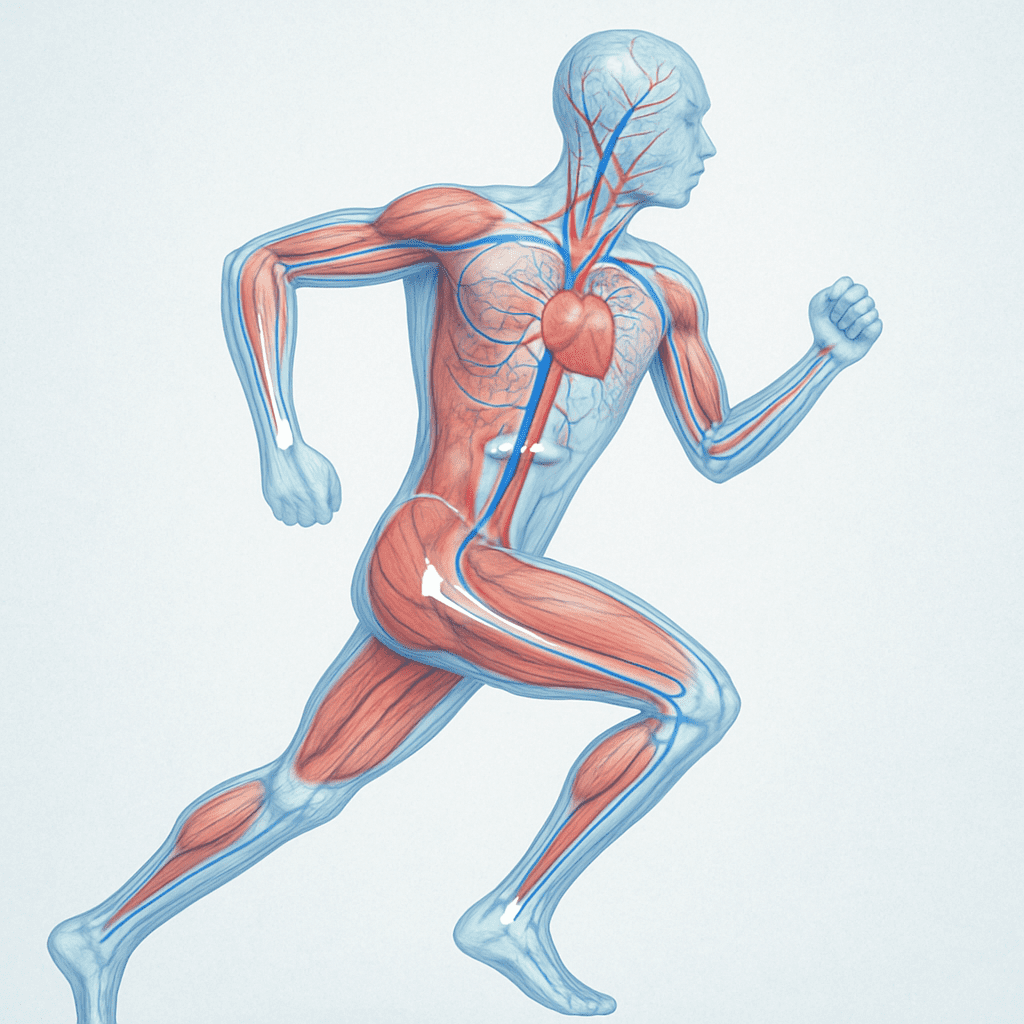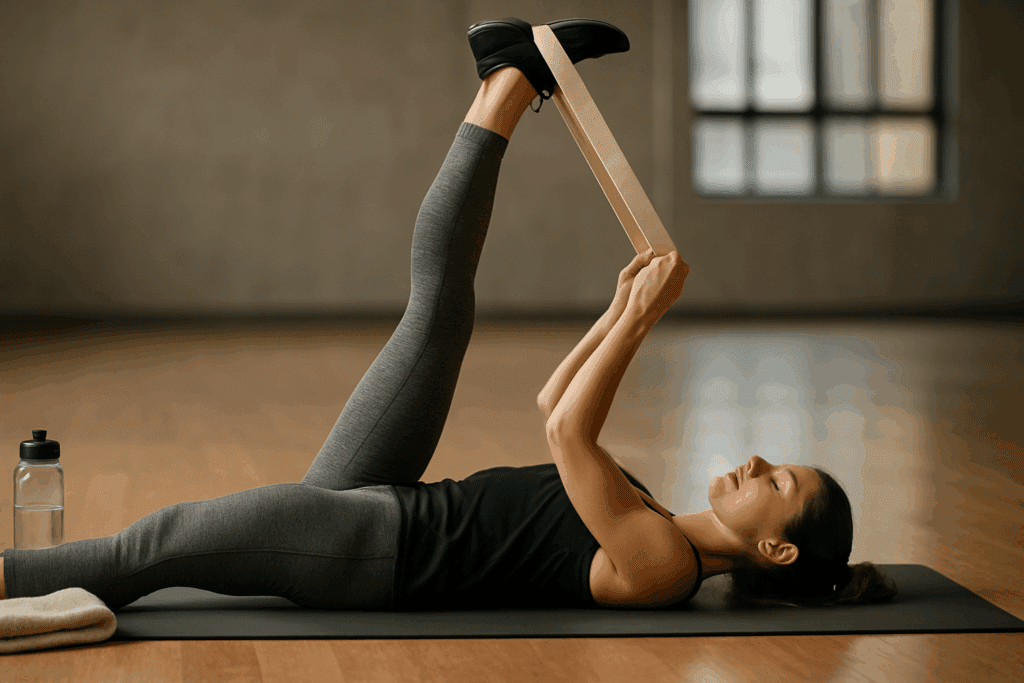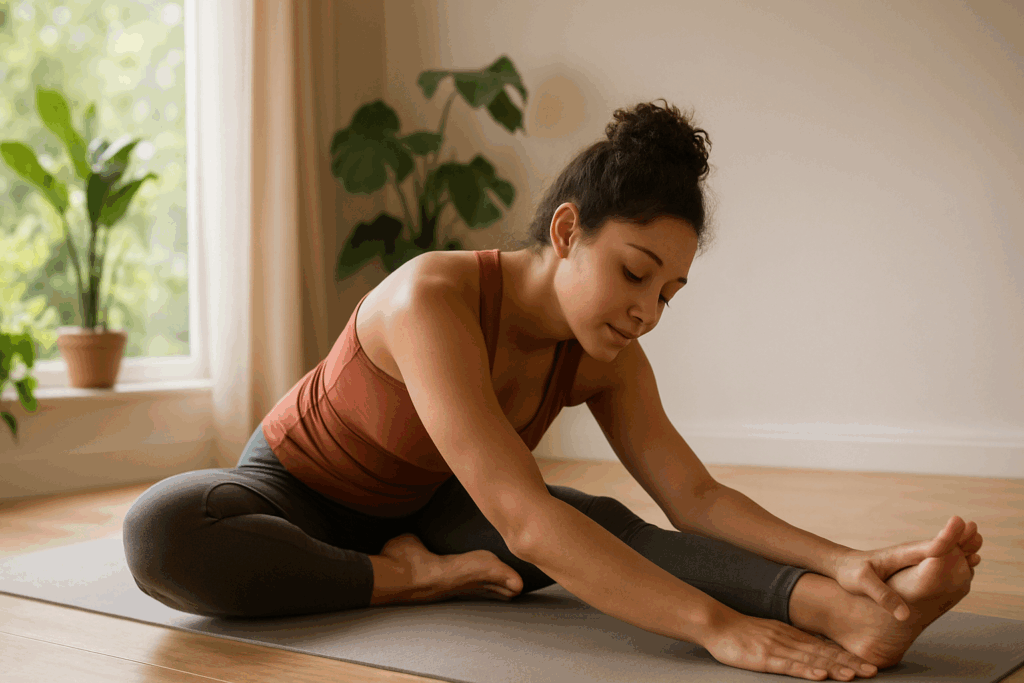Introduction: The Overlooked Power of Stretching in Cardiovascular Training
In the quest for improved athletic performance, increased stamina, and quicker recovery, cardio often takes center stage. Whether through running, cycling, rowing, or interval training, cardiovascular activity is foundational for endurance athletes and casual fitness enthusiasts alike. However, a critical component is frequently sidelined: stretching. When integrated intentionally into a training regimen, cardio stretching exercises provide more than just flexibility. They enhance blood flow, reduce the risk of injury, and support overall cardiovascular efficiency. With growing research highlighting the symbiotic relationship between cardio and stretching, it becomes clear that strategic mobility work before and after cardiovascular activity is not merely a supplement—it’s an essential element for peak performance and sustainable recovery.
You may also like: How to Increase Stamina and Endurance Naturally: Smart Training Tips and Nutrition Habits That Support Cardiovascular Fitness
Stretching is often perceived as a passive or secondary activity, reserved for a brief warm-up or cool-down. Yet, emerging sports science suggests that when performed mindfully and in coordination with cardio efforts, stretches for cardio workouts can significantly influence endurance outcomes. From dynamic warm-up sequences that prime the neuromuscular system to static post-run stretches that promote recovery, cardiovascular stretches are as performance-enhancing as any high-tech gear or supplement. As we unpack the multidimensional value of cardio and stretching, we’ll explore how athletes and fitness-minded individuals can use this powerful combination to elevate endurance, prevent injury, and maximize every workout.

Understanding the Physiology of Stretching and Cardio Synergy
To understand the synergy between cardio stretching exercises and endurance training, it’s helpful to first explore the physiological mechanics at play. Cardiovascular workouts increase heart rate, stimulate circulation, and elevate oxygen transport throughout the body. Meanwhile, stretching—especially dynamic stretching—stimulates the musculoskeletal system, increasing joint mobility and muscle pliability. When paired together, cardio and stretching generate a compounded effect that primes the body for performance and expedites the return to baseline post-exercise.
Dynamic stretches pre-workout, such as leg swings, walking lunges, or arm circles, help activate the muscles and prepare the body for movement. These movements increase core temperature and enhance neuromuscular connectivity, which improves efficiency during exercise. Conversely, static stretches post-workout aid in reducing muscle tension, restoring optimal length-tension relationships, and promoting blood flow to fatigued areas. This improves recovery outcomes and reduces delayed onset muscle soreness (DOMS), which can be a major barrier to consistency for athletes of all levels.
Additionally, cardiovascular stretches support parasympathetic nervous system activation. This facilitates a shift from the sympathetic, or “fight or flight,” state induced by intense cardio back to a restful recovery mode. The transition is essential for physiological balance, hormone regulation, and tissue repair. The integration of stretches for cardio workouts within a training program isn’t just about flexibility—it’s about creating a foundation for sustainable, high-performance outcomes that respect the body’s need for balance and regeneration.

Cardio Stretching Exercises: Dynamic Techniques for Enhanced Performance
Dynamic stretching, by design, involves movement-based stretches that mimic the motions of the exercise you’re about to perform. This style of stretching is particularly effective when integrated into a cardio warm-up because it encourages muscle activation, improves circulation, and supports a full range of motion. Athletes who engage in cardio stretching exercises before training often experience better joint articulation and reduced incidence of strain or sprain.
A properly executed dynamic warm-up might include exercises such as high knees, butt kicks, arm swings, or torso twists. These cardio and stretching movements prepare the major muscle groups—particularly the glutes, hamstrings, quadriceps, and hip flexors—for the repetitive and often high-impact nature of cardiovascular exercise. When performed consistently, these routines also contribute to better posture and body alignment, which are essential for energy conservation during long-duration cardio sessions.
What sets dynamic cardio stretching exercises apart is their ability to improve proprioception—the body’s awareness in space—which is crucial for maintaining balance and coordination under fatigue. This neurological component is often overlooked in favor of purely muscular conditioning. Yet, proprioceptive efficiency can determine how well an athlete performs under duress, especially in endurance-based sports where missteps due to fatigue can result in injury. Thus, these stretches for cardio workout preparation are not only functional—they’re foundational.

Static and Passive Stretching: The Role in Recovery and Injury Prevention
While dynamic stretching is the gold standard for pre-workout preparation, static and passive stretching shine in post-exercise recovery. After a vigorous cardio session, muscles are often in a contracted state, with microtears and localized inflammation contributing to stiffness. Static stretches, held for 30 seconds or longer, help lengthen the muscles, flush out metabolic waste, and facilitate tissue repair.
Targeted cardiovascular stretches can dramatically reduce the likelihood of chronic tension patterns and overuse injuries. For example, stretching the hip flexors, hamstrings, calves, and iliotibial (IT) band after a run or spin class helps alleviate tightness and encourages symmetrical muscle recovery. This balance is essential not only for flexibility but also for joint integrity and long-term athletic performance.
Moreover, passive stretching—where an external force or support aids the stretch, such as using a strap or leaning against a wall—can enhance relaxation and deepen the stretch. This technique supports the activation of the parasympathetic nervous system, which calms the body, reduces cortisol levels, and promotes sleep quality. For endurance athletes and high-frequency trainers, this relaxation response is invaluable. It ensures that the body is not caught in a chronic stress loop, which can lead to systemic inflammation and decreased performance over time.

The Science of Stretching for Cardiovascular Efficiency
Stretching’s impact on cardiovascular function extends beyond musculoskeletal benefits. Studies have shown that flexibility training can enhance vascular function and endothelial health. Regular engagement in stretches for cardio workout sessions promotes arterial compliance, or the ability of blood vessels to expand and contract efficiently. This translates to improved circulation and lower resting blood pressure—two key indicators of cardiovascular fitness.
One proposed mechanism for this effect is the mechanical elongation of blood vessels during stretching, which encourages nitric oxide production. Nitric oxide is a vasodilator that helps maintain blood vessel health and regulates blood flow. Cardiovascular stretches that involve major muscle groups—particularly the lower extremities—have been shown to stimulate this response, making stretching a supportive modality for heart health, especially in populations at risk for hypertension or circulatory issues.
Additionally, stretching improves oxygen uptake efficiency by allowing muscles to lengthen fully and contract more powerfully. When muscles operate within their optimal length-tension relationship, they require less energy for the same output. This means athletes can maintain intensity for longer durations without fatiguing as quickly. In endurance sports, where energy preservation is paramount, the long-term benefits of incorporating regular cardio and stretching routines are both measurable and meaningful.

Designing a Balanced Cardio and Stretching Routine
Creating a structured routine that blends cardio and stretching begins with intention and awareness of the body’s needs. A well-rounded program includes a dynamic warm-up that mirrors the movements of the planned cardio session, followed by the main cardiovascular activity, and ending with static or passive stretches that target the primary muscles used.
For example, a runner might begin with leg swings, ankle rolls, walking lunges, and short bursts of skipping to activate the legs and core. After completing the run, a combination of standing quad stretches, seated hamstring folds, and supine glute stretches would support recovery. Likewise, cyclists can benefit from dynamic hip openers before a ride and deep hip flexor and hamstring stretches afterward. Swimmers, too, require shoulder mobility work pre-swim and pectoral and rotator cuff stretches post-swim to avoid overuse injuries.
When crafting a plan that includes stretches for cardio workout integration, it’s also critical to consider duration and frequency. Short, consistent sessions are more effective than infrequent, lengthy ones. Ideally, stretching becomes an embedded part of the training routine rather than an afterthought. With proper planning and variation, a cardio stretching regimen can evolve alongside one’s fitness level, providing ongoing adaptation and benefit.

Mental and Emotional Benefits of Cardiovascular Stretching
Beyond the physical gains, incorporating cardiovascular stretches into a training plan can yield profound mental and emotional benefits. Stretching encourages mindfulness and body awareness, both of which are critical for long-term athletic success. The meditative quality of focused breathing and intentional movement can help athletes develop greater emotional resilience, reduce performance anxiety, and cultivate a more positive relationship with their training.
Furthermore, the parasympathetic activation that occurs during post-cardio stretching enhances stress reduction and emotional regulation. This is particularly valuable for individuals juggling high training volumes with demanding lifestyles. By creating intentional space for recovery and reflection, stretching becomes not only a physical reset but also a psychological one.
This aspect of training is especially significant in sports psychology, where athletes are encouraged to develop rituals that anchor their performance mindset. Stretching, with its repetitive and rhythmic nature, can serve as a grounding practice. Whether through yoga-inspired sequences or simple floor-based stretches, these moments offer a pause—a time to integrate the gains of the workout and prepare mentally for the next effort.
Avoiding Common Mistakes in Stretching for Cardio Performance
Despite its many benefits, stretching must be approached with care and precision. One common mistake is performing static stretches before a workout. While static stretches are excellent for post-exercise recovery, they can reduce muscle power output if performed beforehand. This diminishes performance and increases the risk of strain during high-intensity cardio sessions.
Another frequent error is neglecting muscle balance. Many individuals focus on stretching the muscles that feel tight while ignoring the antagonists—muscles on the opposite side of the joint. For example, excessively stretching the hamstrings without addressing the hip flexors or quadriceps can lead to imbalances that compromise posture and stride mechanics. A comprehensive stretching program addresses both sides of every major joint to promote symmetry and functional alignment.
Additionally, rushing through stretching or using poor form can undermine the entire effort. Stretching is most effective when performed slowly, with attention to breath and body alignment. Jerky or bouncing movements, often referred to as ballistic stretching, can lead to microtears and overstretching, particularly in less conditioned athletes. Precision, patience, and consistency are the cornerstones of an effective cardiovascular stretching protocol.
Frequently Asked Questions: Cardio Stretching for Performance and Recovery
What’s the best time of day to incorporate cardio stretching exercises for optimal results?
The ideal time to perform cardio stretching exercises depends largely on your training schedule and individual body rhythms. For early morning exercisers, incorporating dynamic cardiovascular stretches helps wake up the muscles and joints, preparing the body for sustained physical effort. Midday workouts benefit from these exercises as a way to counteract the stiffness that accumulates from hours of sitting, particularly in desk-bound individuals. Evening sessions, on the other hand, can use stretches for cardio workout recovery to reduce muscle tension and promote more restful sleep. Ultimately, consistency matters more than timing, but aligning stretches with your circadian energy patterns can amplify performance outcomes.
Can cardiovascular stretches improve posture and alignment over time?
Absolutely. Cardiovascular stretches, when performed consistently and with proper technique, contribute to better posture by enhancing muscle balance and joint alignment. Many endurance athletes develop asymmetries due to repetitive motion patterns—runners often experience tight hip flexors and weak glutes, while cyclists may struggle with rounded shoulders and shortened hamstrings. Incorporating targeted stretches for cardio workout routines can address these imbalances directly. Over time, this not only improves posture but also optimizes biomechanics, allowing for more efficient movement and reduced risk of injury. Good posture also supports respiratory function, which is critical for cardiovascular endurance.
How do cardio and stretching routines affect heart rate variability (HRV)?
Heart rate variability (HRV) is a key indicator of autonomic nervous system balance and overall recovery readiness. Engaging in cardio and stretching sessions, particularly when paired with deep, controlled breathing, can significantly improve HRV scores. This is because certain cardiovascular stretches promote vagal tone, which enhances parasympathetic activity and facilitates recovery. High HRV is associated with better adaptation to training stress, while low HRV often signals overtraining or poor sleep. Regular post-exercise cardio stretching exercises that emphasize slow, sustained movements and diaphragmatic breathing can therefore act as a physiological reset button, improving both performance and resilience.
Are there any differences in cardio stretching needs between men and women?
Yes, there are subtle but important differences in how men and women may benefit from or require variations in cardio stretching exercises. Women generally exhibit greater baseline flexibility, particularly in the hips and hamstrings, which may necessitate more stabilization-based cardiovascular stretches. Men, on the other hand, often require more targeted flexibility work to open up tight hip flexors and shoulders. Hormonal fluctuations, especially related to the menstrual cycle, may also influence muscle elasticity and hydration status in women, potentially affecting stretch tolerance and timing. A personalized approach to cardio and stretching, informed by anatomical and hormonal considerations, yields the best results for both sexes.
Can integrating stretches for cardio workouts help enhance lung capacity or breathing efficiency?
Yes, when properly structured, stretching can enhance respiratory efficiency by improving thoracic mobility and diaphragmatic function. Many athletes overlook the importance of the intercostal muscles and the diaphragm in breathing mechanics. Cardiovascular stretches that open the chest, lengthen the spine, and engage the obliques can reduce tension around the ribcage and allow for deeper, more efficient breaths. For instance, side stretches combined with breath-holding exercises post-cardio can improve both lung expansion and breath control. Over time, this not only increases oxygen intake during training but also fosters better CO₂ tolerance—essential for endurance and recovery.
How do age and flexibility limitations impact the effectiveness of cardio stretching exercises?
Age-related declines in collagen elasticity and joint lubrication can make stretching more challenging, but also more necessary. For older adults, cardio stretching exercises can serve as a protective mechanism against injury and a way to maintain cardiovascular responsiveness. While flexibility naturally declines with age, consistent stretching can help preserve range of motion, mobility, and balance. It’s important to tailor stretches for cardio workout routines to the individual’s mobility level—using supports like yoga blocks or resistance bands can make these exercises more accessible. Importantly, older adults often experience better cardiovascular outcomes when stretches are combined with light aerobic activity and mindfulness techniques.
Can cardio and stretching routines support mental health beyond just physical recovery?
Definitely. The interplay between cardio and stretching not only benefits the body but also profoundly influences the mind. Cardiovascular exercises release endorphins that elevate mood, while the slower, reflective nature of stretching supports emotional regulation. When performed together, especially in a rhythmic or meditative sequence, these routines can reduce symptoms of anxiety and depression. Certain cardiovascular stretches, particularly those focused on breath synchronization and spinal decompression, activate the parasympathetic nervous system, encouraging a state of calm. For individuals coping with high-stress lifestyles or burnout, this integrated approach offers a powerful, drug-free tool for emotional resilience.
What’s the relationship between hydration and the effectiveness of cardiovascular stretches?
Hydration plays a crucial role in the effectiveness of cardiovascular stretches, especially at the fascial level. Dehydrated muscles and connective tissues are more prone to stiffness, microtears, and limited elasticity. When properly hydrated, the fascia becomes more pliable, allowing for a deeper and more effective stretch. Additionally, electrolytes influence neuromuscular signaling, which affects how the body responds to both cardio and stretching stimuli. For optimal results, it’s advisable to hydrate adequately before, during, and after cardio stretching exercises, particularly in high-heat environments or endurance-focused sessions.
How can athletes use cardiovascular stretches to enhance sports-specific performance?
Athletes can tailor cardiovascular stretches to mimic the demands of their specific sport, thereby improving performance through neuromuscular adaptation. For example, soccer players may use dynamic leg swings and lateral lunges to simulate kicking mechanics, while swimmers may focus on shoulder mobility drills and torso rotation stretches. These sport-specific cardio and stretching routines not only reduce injury risk but also optimize muscle recruitment and joint mobility in real-time game scenarios. Incorporating stretches for cardio workout warm-ups and cooldowns also creates muscle memory patterns that translate to quicker reflexes and better motor control. The key is to align each stretch with the biomechanical requirements of the sport.
Are there innovative tools or technologies that enhance the benefits of cardio stretching exercises?
Yes, several emerging technologies are being integrated into cardio stretching practices to enhance both effectiveness and user engagement. Wearable devices like smartwatches and HRV monitors can provide real-time feedback on recovery status, helping athletes time their cardio and stretching routines more precisely. Percussion massage tools, such as Theraguns, can be used pre- or post-stretch to improve blood flow and break up fascial adhesions. Additionally, mobile apps that guide users through customized stretches for cardio workout sessions are gaining popularity, especially among home exercisers. Virtual reality (VR) stretching modules are also being explored for their immersive, gamified experience, making cardiovascular stretches more interactive and accessible for diverse populations.
Conclusion: Stretching as a Cornerstone of Endurance, Recovery, and Performance Optimization
In the landscape of endurance and stamina training, cardio stretching exercises are not merely optional—they are essential tools for optimizing physical output, accelerating recovery, and supporting holistic wellness. The integration of cardio and stretching strategies promotes a symbiotic relationship that enhances flexibility, joint health, cardiovascular efficiency, and emotional resilience. Far from being a passive cooldown or warm-up routine, stretches for cardio workouts function as intelligent interventions that refine and reinforce the body’s capacity to perform at its highest potential.
By embracing both dynamic pre-workout and static post-workout cardiovascular stretches, athletes can create a rhythm of preparation and recovery that aligns with the body’s natural performance cycles. Whether preparing for a marathon, managing a structured training plan, or simply seeking to improve daily fitness levels, the inclusion of targeted stretching practices provides an evidence-based, experience-backed foundation for sustainable success.
Ultimately, stretching invites athletes to listen more closely to their bodies, to honor the subtle cues of fatigue and readiness, and to approach each workout with intention and care. In doing so, it fosters not only better physical outcomes but also a deeper connection to movement itself—transforming endurance training from a purely physical pursuit into a mindful, restorative practice. Stretching, when approached as a strategic pillar of cardiovascular training, empowers athletes to push harder, recover faster, and perform smarter.
Was this article helpful? Don’t let it stop with you. Share it right now with someone who needs to see it—whether it’s a friend, a colleague, or your whole network. And if staying ahead on this topic matters to you, subscribe to this publication for the most up-to-date information. You’ll get the latest insights delivered straight to you—no searching, no missing out.

